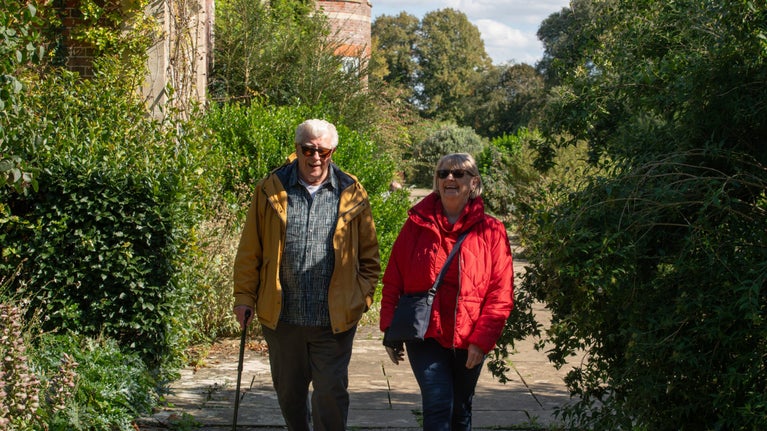
Become a member
Join today and help protect nature, beauty and history – for everyone, for ever. Enjoy access to more than 500 places with National Trust membership.
Arts and Crafts family home with Morris & Co. interiors, set in a beautiful hillside garden
West Hoathly Road, East Grinstead, West Sussex, RH19 4NE

| Asset | Opening time |
|---|---|
| House | 11:00 - 16:30 |
| Café | 10:00 - 17:00 |
| Garden | 10:00 - 17:00 |
| Shop | 11:00 - 17:00 |
| Secondhand bookshop | 11:00 - 15:00 |
Last entry to the house is at 4pm. We have very limited space for storing coats and baggage, please only bring a minimum of belongings. We cannot allow large backpacks or bags to be worn inside the house. What 3 words location: moves.sting.cape
| Ticket type | With Gift Aid | Without Gift Aid |
|---|---|---|
| Adult (18+) | £18.70 | £17.00 |
| Child (5-17) under 5s free | £9.40 | £8.50 |
| Family (2 Adults and up to 3 children) | £46.80 | £42.50 |
| 1 adult and up to 3 children | £28.10 | £25.50 |
| Group (Adult 18+) | £16.15 | |
| Group (Child 5-17) | £8.08 |
Second-hand bookshop open 10am - 5pm.
Lunches, snacks and freshly made cakes using produce from our Kitchen Garden when in season.
Open 10am - 5pm.
Well behaved dogs on short leads are welcome.
Arts & Crafts and Morris & Co. inspired gifts, textiles and ceramics.
Mobility parking near entrance. Partly accessible grounds with slopes and steps. Adapted toilets.
Find family-friendly things to do at Standen, from activity based trails in the school holidays and walking woodland paths to building a den and running off steam in Adventure Corner. Download a copy of our family map to plan ahead with your family visit.
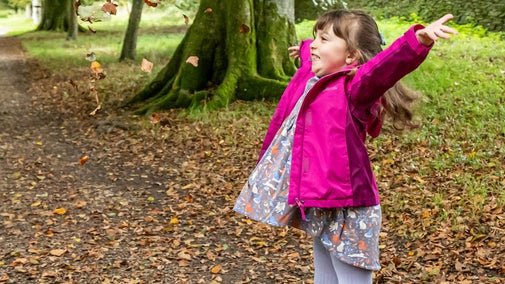
Stay up to date with all our events here at Standen and plan your visit before you arrive. From children's trails in the school holidays and music on a Sunday afternoon, to Arts and Crafts exhibitions and demonstrations, find out more about our year round seasonal events.

Bring your dog for a walk at Standen and explore acres of woodland paths. Dogs are also welcome in the formal garden so you can explore more with your four-legged friend. Standen House and Garden is a two pawprint rated place.

Sometimes it's the little things that make the best family memories, like having a swing, playing in the grass or spotting bugs on a family walk. Our new family maps are free to pick up and show how to best enjoy your family visit.
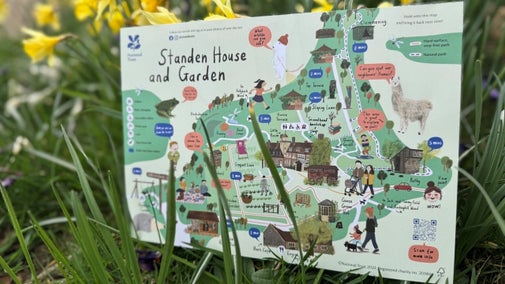
Plan your visit to this Arts and Crafts house and garden.

Standen is a great place to visit with a group. For a day to remember, book a Standen history tour with one of our friendly guides, then stop off for lunch or refreshments in the barn cafe. Visit the Arts and Crafts house, walk around the hillside garden or explore further afield in the woodland. Browse the range of William Morris products in the shop and find a gift for a special someone, or even just treat yourself. Group discounts are available. To chat through your group visit please email standengroups@nationaltrust.org.uk or call 01342 323029.
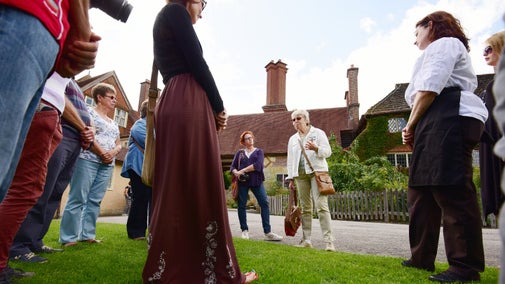
One of the finest examples of Arts and Crafts workmanship, with Morris & Co. interiors.
Hillside garden for all seasons, with an award-winning plant collection and views across the Sussex countryside. Features an orchard, kitchen garden and rosery.
Footpaths from the estate lead to High Weald woodland and Ashdown Forest.
Our natural play area has reopened and features a willow maze, wooden swing and balance beam for children to enjoy.
Converted 18th-century barn, serving seasonal lunches and homemade cakes, some made with produce from the kitchen garden.
Arts and Crafts and Morris & Co. inspired gifts, textiles and ceramics with a range of seasonal plants and pots to fill your garden.
Second-hand bookshop with a variety of books on offer, from fiction to fantasy.
Find family-friendly things to do at Standen, from activity based trails in the school holidays and walking woodland paths to building a den and running off steam in Adventure Corner. Download a copy of our family map to plan ahead with your family visit.

Explore the family home of the Beales, designed by Philip Webb and furnished throughout by Morris & Co fabrics and wallpapers. An Arts and Crafts inspired comfortable country retreat.

Stroll around the Arts and Crafts inspired hillside garden at Standen, explore themed outdoor rooms and find a rare collection of plants including ones grown by Margaret Beale.

Enjoy self-guided walks through 100 acres of West Sussex countryside on the Standen estate, including ancient woodlands, wildflower meadows and links to the Bluebell Steam Railway.
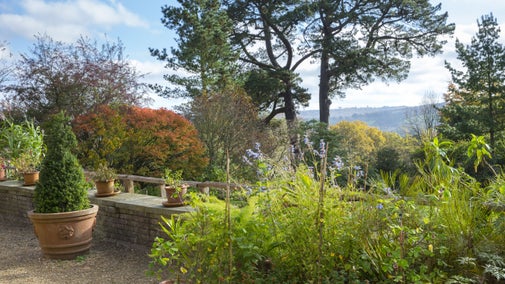
Experience the magic of Christmas as the house is transformed into a festive retreat. See how the Beale family celebrated Christmas, explore their wish lists, and enjoy beautifully decorated rooms. Join in with our family 'Jolly Holly' trail, with fun and games for all with a prize at the end. During 'Twilight Lates' weekends in December, see the house atmospherically lit for Christmas and join us for carols around the Christmas tree.
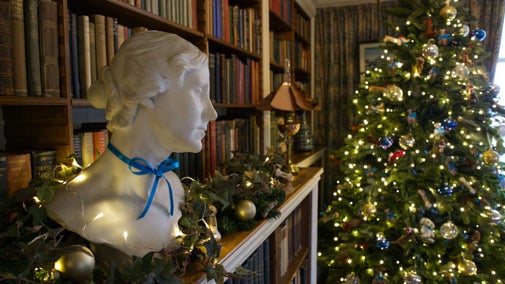
A moderate three-mile walk that takes in the whole Standen estate and wider countryside.

Treat yourself to a seasonal meal or snack from the Barn Café at Standen House and Garden.

Take a piece of Standen home with you when you visit our shop in the old Scullery.
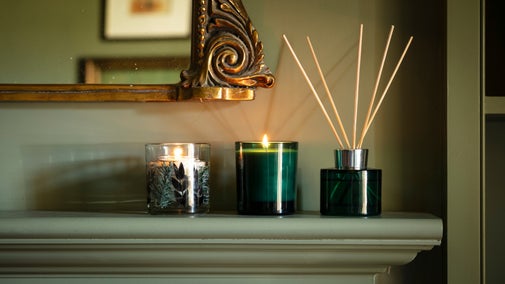
Sat 19 Jul - Sun 26 Oct. Delve a little deeper into the Arts & Crafts movement, as told through a selection of special pieces from the historic collection at Standen. From exploring intricate detail in craftsmanship, to the wider social impact, the exhibition explores the eclectic influences and social ideology that made this movement so powerful and unique. Last entry to the house is at 3.30pm. Exhibition included in general admission.
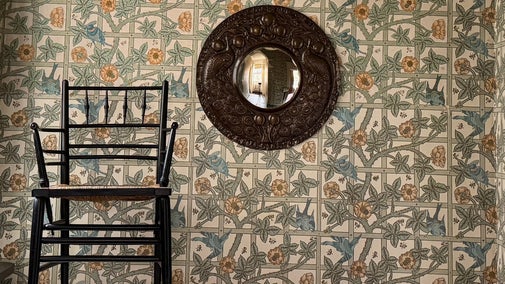
Sat 4 Oct - Sun 2 Nov: 10am - 3.30pm. Based on the bestselling children’s books, this Halloween the bunnies are setting off on an adventure to find the ghosts hidden around Standen with heaps of exciting things to see and do along the way. Pick your bunny name, play Halloween hoopla, race your broomstick, and watch out for the warty toads as you cross the stepping stones, before joining the celebration party and collecting your prize/sticker. This trail is ideal for preschoolers and young children. Trail free (with normal admission).

See the East Grinstead Spinners at Standen on the first Friday of every month. Watch as they spin and weave and find out about the wool dyeing process. The East Grinstead Spinners are a small, enthusiastic group who enjoy sharing ideas, learning new skills, and spinning, weaving or dyeing among friends. Join them at Standen on the first Friday of every month from 18 Feb until 31 Oct.
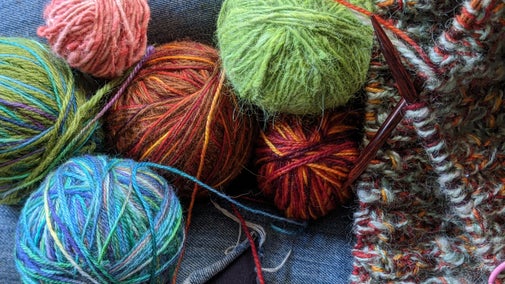
Sat 22 Nov – Sun 4 Jan: 10am – 4pm with last entry to the house at 3pm. An atmospheric Christmas at Standen with the house dressed in festive splendour. Explore the garden on a family trail or join us for one of our special twilight openings.

Step inside the house and experience the magic of Standen in the evening, with rooms lit and decorated with twinkling lights and Christmas trees. Soak up the atmosphere as night falls. Choirs start singing at 3.30pm. Sat 6 & Sun 7 Dec, Sat 13 & Sun 14 Dec and Sat 20 & Sun 21 Dec 3.30pm - 6pm.
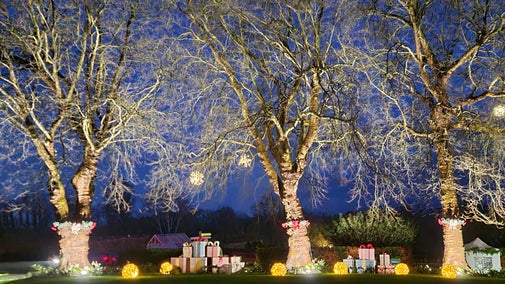
Step into a world of seasonal sparkle with our enchanting gift-themed trail, inspired by the Beale family and their Christmas wishes. As you journey through the trail, enjoy games, joyful surprises and moments of festive fun for the whole family. Each trail is £4.75 and includes a beautifully wrapped gift and a trail sheet to guide your adventure. Normal admission applies. Sat 22 Nov - Sun 4 Jan: 10am - 3.30pm.
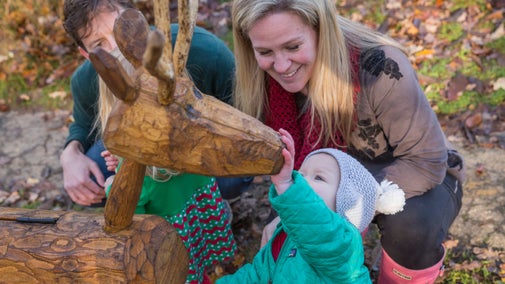
Make your festive visit to this imaginatively decorated Arts and Crafts home, atmospherically lit and filled with twinkling lights and Christmas trees. Be inspired by the centrepiece Christmas tree in the Hall, festooned and sumptuously decorated, ready for a family Christmas. Decorations are inspired by the Beale family's hope and wishes for Christmas. Last entry to the house is at 3pm. Sat 22 Nov 2025 - Sun 4 Jan 2026.
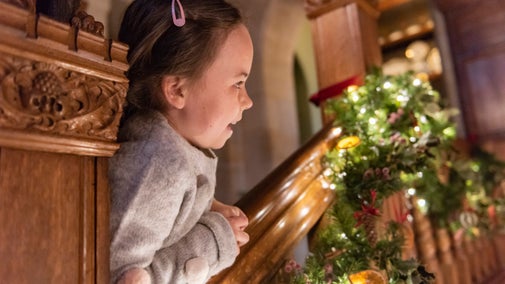
Fri 26 Dec – Sun 4th Jan. Get your pooch dressed up for Christmas and visit us for a stroll around the garden. Doggie treat for festively dressed pooches. Garden closes at 4pm.

An 8.5-mile walk for more experienced walkers, from Standen to Selsfield Common and back, that takes in woodland, heathland and open-country paths.

Walk to and from Kingscote Station and Bluebell Railway, where connecting steam trains can be taken to Sheffield Park or into the historic town of East Grinstead.

A short walk around Standen's Hollybush Wood, a haven for ancient woodland indicator plants.

Experience how it felt to live in an Arts and Crafts house and stay The Morris Apartment, a one-bedroom apartment in trademark Arts and Crafts style on the second floor of Standen House. After all the visitors have left, explore the gardens at Standen at your leisure.

A one-bedroom apartment in trademark Arts and Crafts style, on the second floor of Standen House.
Sat 4 Oct - Sun 2 Nov: 10am - 3.30pm. Based on the bestselling children’s books, this Halloween the bunnies are setting off on an adventure to find the ghosts hidden around Standen with heaps of exciting things to see and do along the way.
Sat 19 Jul - Sun 26 Oct. Delve a little deeper into the Arts & Crafts movement, as told through a selection of special pieces from the historic collection at Standen.
Step into a world of seasonal sparkle with our enchanting gift-themed trail, inspired by the Beale family and their Christmas wishes. As you journey through the trail, enjoy games, joyful surprises and moments of festive fun for the whole family.
Sat 22 Nov – Sun 4 Jan: 10am – 4pm with last entry to the house at 3pm. Join us for an atmospheric Christmas with the house dressed in festive splendour. Explore the garden on a family trail or join us for one of our special twilight openings.
Sat 22 Nov - Tues 23 Dec: 11am - 3.30pm. The Sussex Guild will be at Standen for some inspired Christmas shopping. Open daily.
Make your festive visit to this imaginatively decorated Arts and Crafts home, atmospherically lit and filled with twinkling lights and Christmas trees.
Step inside the house and experience the magic of Standen in the evening, with rooms lit and decorated with twinkling lights and Christmas trees. Soak up the atmosphere as night falls. Choirs start singing outside at 3.30pm.
Fri 26 Dec – Sun 4th Jan. Get your pooch dressed up for Christmas and visit us for a self led wagging walk. Doggie treat for festively dressed pooches.
James and Margaret Beale chose an idyllic location with views across the Sussex countryside for their rural retreat. Designed by Philip Webb, the house is one of the finest examples of Arts and Crafts workmanship, with Morris & Co. interiors creating a warm and welcoming atmosphere. The house is dressed for a weekend stay in 1925, so you can imagine you are a guest of the family.
A major restoration of the 5-hectare (12-acre) hillside garden showcases year-round seasonal highlights and an award-winning plant collection. On the wider estate, footpaths lead out into the woodlands, Ashdown Forest and wider High Weald Area of Outstanding Natural Beauty.
Note: Well behaved dogs on short leads are welcome in the formal gardens.
Find out more about this modern home with historic influences and charming Arts and Crafts workmanship, designed and built for the Beale family at Standen in West Sussex.

Helen Beale was the youngest daughter of James and Margaret Beale. She was independent and self assured, and was involved in nursing, the WRNS and the First World War.
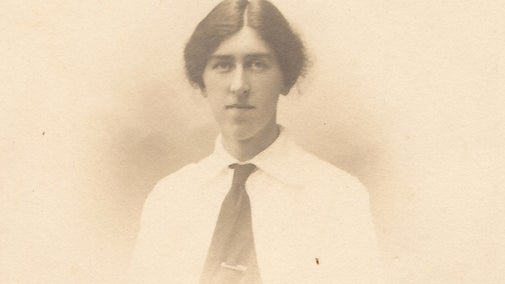
Discover the Beale family, who commissioned Standen to be designed and built by architect Philip Webb .

Standen was designed in 1891 by Philip Webb for Margaret and James Beale and their family, who lived there until 1972 when the house was given to the National Trust. For the first decade of our ownership, the collection was expanded by Helen and Arthur Grogan who lived in the house and opened it to the public. The collection reflects the creativity and taste of all these people, and features items designed by leading late 19th century artists and craftspeople.
There are several original Morris & Co wallpapers in the house. Philip Webb worked closely with William Morris and recommended the firm’s papers as suitable decoration. ‘Trellis’ was among the first wallpaper patterns to be produced by Morris & Co and was used in the downstairs corridors at Standen. The design reflects the trellis installed by Webb on the south terrace, uniting house and garden.

The decoration of Standen and the planting of the garden reflect the taste, creativity and energy of Margaret Beale. She embroidered some of the textiles herself, and is shown in this portrait busy with her crochet. By contrast, in the companion portrait painted to mark his retirement, her husband James is depicted with his hands folded in inactivity.

The chest of drawers, dressing table, mirror, bedside table and clothes press in the Larkspur Room were designed by Ernest Gimson, one of the most influential designers of English Arts and Crafts furniture. The matching pieces are made from figured mahogany and have fine detailing, including chequered beading and silvered metal handles.

Explore all the objects and works of art we care for at Standen on the National Trust Collections website.

Created in Victorian times, the Quarry Garden at Standen is in need of urgent restoration. Shoring up and rebuilding are planned in the coming years before it can be replanted and reopened. Once a main feature of the garden with a small pond used by the Beale children to sail their toy boats, it's historic drainage system has failed and it's fallen victim to a changing climate with more frequent bouts of intense rainfall which have led to its partial collapse.
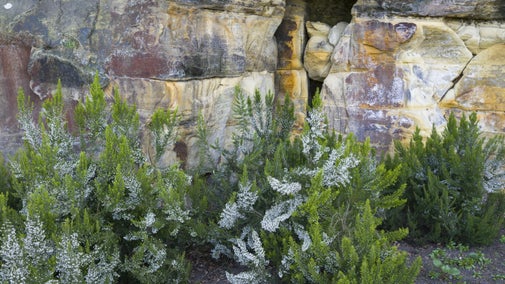
We’re installing a pellet biomass system to provide heating and hot water to the house & three apartments, plus two Air-Source Heat Pump systems to cater for Standen Cottage.

Find out about the conservation work that goes into looking after Standen, including major projects, which have restored areas as they would have been when the Beales lived here.
Volunteers are essential to the work we do at Standen. Varied roles include greeting visitors, working front of house in the café or keeping the garden looking its best. If you'd like to talk to us about volunteering, please call 01342 323029 or email us at standen@nationaltrust.org.uk

National Trust supporter groups across Sussex help to raise funds for places like Nymans and Sheffield Park, while also getting together for days out, talks and volunteering.


Join today and help protect nature, beauty and history – for everyone, for ever. Enjoy access to more than 500 places with National Trust membership.
By sharing your email address you’re agreeing to receive marketing emails from the National Trust and confirm you’re 18 years old or over. Please see our for more information on how we look after your personal data.